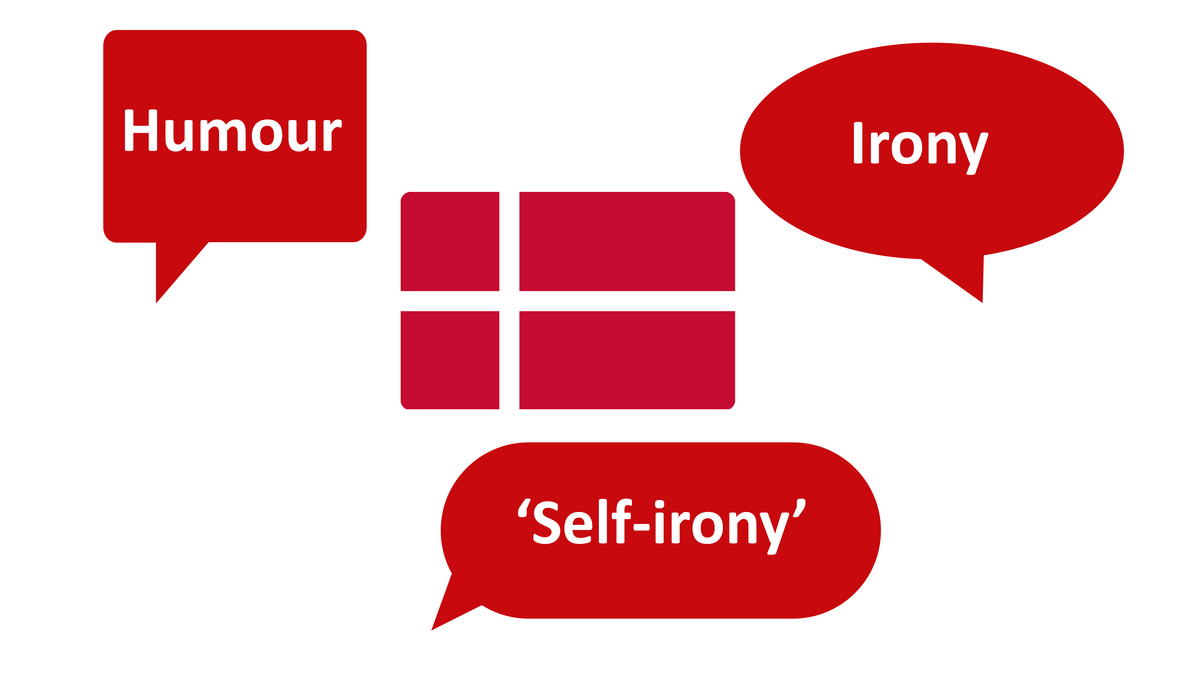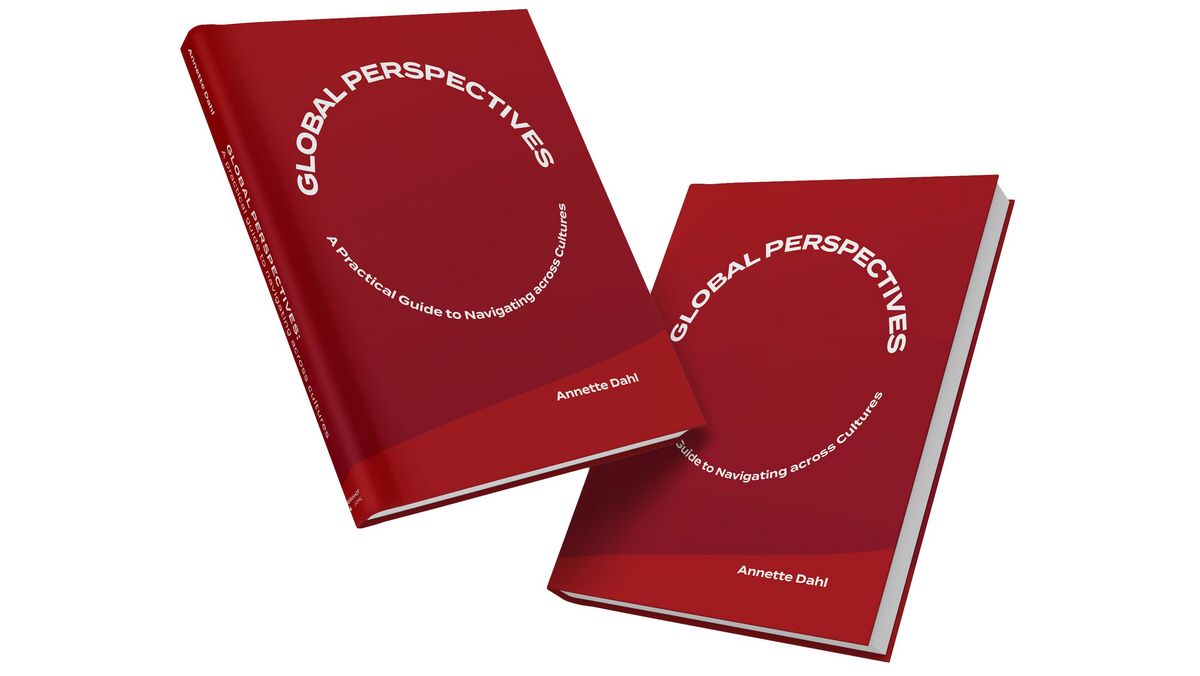Danish Humour: Tips for Danes Working Globally – And for Internationals Working with Danes
When a group of international students in Denmark were asked to find three adjectives to describe Danes in general, words such as 'open', 'happy', 'free', 'friendly', 'relaxed' and 'straightforward’ were used most frequently. All very positive words.
When the same group of students described Danish humour with three words, a much darker picture appeared, dominated by words such as ‘ironic’, ‘sarcastic’, ‘direct’, ‘knowing no bounds’, 'aggressive' and 'superior'.
The above data is from a survey carried out by professor emeritus Lita Lundquist while researching Danish humour – including interviews with a wide range of leaders, employees and students from both Danish and international backgrounds.
And these results indicate a trend we recognise at C3: When Danish humour meets the rest of the world, often that meeting derails!
The first part of this blog post describes three 'failed humour events', where encounters with Danish humour were described as unpleasant experiences by the non-Danes in question. In each case, we explore:
- What happened in the specific situation?
- How did the non-Danes experience the situation?
- And how might someone more familiar with Danish humour have experienced the situation in a positive light?
The three cases are featured in a book called Danish Humour – Sink or Swim by Lita Lundquist and Helen Dyrbye. In the book, the authors investigate what makes Danes, their language and humour so ‘special’ – and guide both Danes and non-Danes on how to reach port safely when navigating the white-water rapids of Danish humour!
In the second part of the blog post, C3 outlines six tips on using Danish humour in a work context: Three tips for Danes working across cultures and three tips for internationals working with Danes.
Three failed humour events between Danes and non-Danes
Wei from China
Wei, a Chinese student from Shanghai, is about to start studying in Denmark. He has been allocated a Danish study buddy to help him settle into his new surroundings.
To brighten the mood, Wei mentions to his buddy that he has read that the Danes are the happiest people in the world.
As quick as a flash, his Danish buddy replies: “That’s because of excessive use of alcohol and sex.”
Wei’s view of the situation
Wei is stunned and actually feels slightly offended by the reply.
He has been looking forward to meeting his study buddy, but this first encounter falls far short of his hopes. He explains that he would have preferred “a more reserved, discrete form of humour”.
Wei’s reaction is more intense because he has only just met his buddy. As he says, he needs to know a person very well before introducing humour.
An alternative view of the situation
In other words, Wei would not describe his meeting with his Danish buddy – and Danish humour – as a positive experience.
But what would happen if the person experiencing the situation could ‘play along’ with the buddy's humour? Let’s take a look. We’ll call this ‘hypothetical person’ A.
A returns the buddy’s quip about the happy Danes with an equally swift response: “Then I’ve come to the right country!”
A feels that the buddy’s informal and direct style has given him a warm welcome to the fun-loving Danish student life that he has already joined.
Jelena from Serbia
A Serbian exchange student, Jelena, has just arrived at Copenhagen Airport.
As she passes over her passport for inspection, the Danish officer makes the following comment: “You have something on your lip” – probably referring to Jelena’s lip piercing.
Jelena’s perception of the situation
Jelena is confused and frustrated. She feels he is intruding well beyond the bounds of common courtesy and wading far into her private life, which is in no way appropriate in such a formal situation.
She is also concerned. What does it mean when an authority figure makes such a comment? Is she about to be barred entry to Denmark?
An alternative view of the situation
Let’s take another look at how a hypothetical person, here called B, might see the situation differently.
Though tired from travelling, when B hands over her passport and the border official, with a twinkle in his eye, remarks that there is something on her lip, she cheers up.
She plays along with the passport controller’s joke and quips back: “What’s that doing there?!”
B thinks it is lovely to visit a country where, even after a long day at work, a representative of officialdom has the energy to joke with incoming visitors.
André from France
André is a French scientist who has not managed to learn Danish even though he has lived in Denmark for several years. While chatting with some Danish colleagues, he defends himself by explaining that the Danish language courses are fully booked.
One of his Danish colleagues replies: “Anyway, to learn Danish, there’s no choice. You should get a divorce and marry a Danish woman.”
André's perception of the situation
André finds this reply terribly offensive and is deeply hurt.
How dare his Danish colleague refer to his wife in that way? And on top of that, the comment was said in a cold tone of voice.
Struggling with the Danish language is already frustrating enough, he feels.
André says that he has almost developed “paranoia about the Danes and their humour” after that experience.
An alternative view of the situation
We can introduce one last hypothetical person, C, to show the situation from a different perspective.
When C’s Danish colleague suggests that C should divorce his French wife and find a Dane instead, he immediately realises that the comment is said in fun.
“Can I borrow yours?” he quips back.
He enjoys being able to joke with his Danish colleagues. It relieves his frustration over learning Danish that they can laugh about the situation together.
Why did the three humour events run aground?
We don’t actually know what Wei’s buddy, the passport controller at Copenhagen Airport and Andrés colleague were thinking when they fired off their comments. But we are allowing ourselves to assume that they had positive intentions.
So we have three so-called humour events where the Danish ‘senders’ made comments with the best of intentions – but they became bad experiences for the non-Danish ‘recipients’.
Why did these three specific humour events fail?
This is what Lita Lundquist and British-born Helen Dyrbye explore in depth in their book Danish Humour – Sink or Swim. Below, we will zoom in on three special traits of Danish humour that according to Lundquist and Dyrbye (and we totally agree at C3) are part of the explanation.
A twinkle in your eye, a dash of irony, and humour as dry as the Sahara desert
If you have a Danish background yourself, you may be thinking that it is obvious to everyone that the Danes in the three cases above intend no offence. It is all just said in fun.
The problem is that international recipients cannot break the linguistic and cultural codes used by the Danes making the comments.
One element of Danish humour that is particularly hard for non-Danes to decode is irony.
When you are ironic, you say something that you do not actually mean.
Andrés colleague certainly does not really mean that André should replace his French wife with a Danish alternative. And the comment from Wei’s buddy explaining the Danes’ high levels of happiness was probably also said with an ironic distance – perhaps laced with self-irony.
Many Danes would be able to decode whether something is said ironically through a range of subtle signs in the situation. For example, that the sender says something in a ‘deadpan’ manner or ‘with a twinkle in their eye’.
As a language, Danish is often described as ‘flat’. There are not many fluctuations in the spoken language to signal that humour is coming. This ‘cold tone’ that André hears his colleague use would probably be perceived by a Dane as ‘a dry comment’, which, for Danes, is often a positive description.
Informal and relaxed tone – also in work situations
‘Informal’ and ‘relaxed’ are two key words often associated with Danes – reflected in both their self-perception and non-Danes’ descriptions of Danes in general.
And these two words also fit Danish humour very well. If someone attempts a joke to make the atmosphere less formal and relaxed, that is typically viewed in a positive light. That also applies at work.
But in many work cultures around the world, people do not share the Danish preference for using humour in a work context.
For Jelena, there is a complete mismatch between the extremely formal situation as she enters the passport control area, and the Danish official’s familiar comment.
And for André, his Danish colleague’s reference to André’s private life (his wife) far oversteps the polite, respectful and professional distance expected in a work context.
In all three failed humour events, the tone is perceived by the non-Danes in the cases as being far too informal, far too relaxed and far too familiar.
We can joke with everyone about everything
Another phrase many non-Danes associate with Danish humour is ‘knows no bounds’.
And that matches the Danish cultural self-image well: It’s OK to joke with everyone about everything.
‘Everyone’ also includes people we have just met (as in Wei’s situation) and members of the public when we hold positions of authority (as in Jelena’s situation). This also applies to managers joking with employees – and vice versa.
‘Everything’ means that almost nothing is sacred when it comes to Danish humour. You can make fun of sex, violence, intimate details from your private life (even at work), yourself, your colleagues, the prime minister or the Queen.
Because we must never take ourselves too seriously. According to the consensus among Danes, ‘self-important’ is one of the worst things you can be!
Danish humour in depth
Here we have zoomed in on three characteristics of Danish humour that help to explain why the Danes’ witty comments ran aground and became bad experiences for Wei, Jelena and André.
We hope you have enjoyed this small sample from Lundquist and Dyrbye’s book Danish Humour – Sink or Swim. And we would strongly recommend that you get the book so that you can really explore in depth the three failed humour events above and many more besides!
In addition to further perspectives on the three cases above, the book provides plenty of clear insights and good advice on how to navigate the ‘charms’ of Danish humour – both for Danes and non-Danes.
Here are some highlights from the book:
- A sparkling series of thought-provoking (and entertaining!) examples of non-Danes’ encounters with Danish humour in professional contexts
- How Danish history and society have influenced Danish humour
- Characteristics of other ‘national humour traditions’ – with a special focus on the British and French
- How the Danish Queen elegantly combines courtly life with the campfire mentality
- Why the Danish language is so difficult to learn (incl. short audio files to illustrate the points) – and why that makes Danish humour even harder for non-Danes to decipher

Danish Humour – Sink or Swim
Lita Lundquist and Helen Dyrbye’s book Danish Humour – Sink or Swim is relevant for everyone with an international background working or living with Danes – and for Danes living or working across cultures!
Lita Lundquist, professor emeritus at CBS, has a Danish background and has researched Danish humour for years.
Helen Dyrbye has lived and worked in Denmark for over twenty years as a translator, language consultant and writer and is the principal author of The Xenophobe’s Guide to the Danes.
Buy the book Danish Humour – Sink or Swim here.
If you would like to explore Danish humour in even more depth and also have an academic interest in the nature of humour, we can recommend Lita Lundquist’s book written in Danish Humorsocialisering. Hvorfor er danskerne (ikke) så sjove (som de selv tror)?
Three tips for Danes working globally
1. Be aware of the common ground required for irony to work
When dealing with cross-cultural communication, at C3 we often score the various cultures on a scale of low context to high context.
People from low-context cultures typically prefer communicating directly and explicitly. For example, if you mean ‘no’, you say ‘no’ directly and without padding. The context of the communication plays only a minor role.
People from high-context cultures typically prefer to communicate indirectly. They do not formulate their message (e.g. a ‘no’) explicitly but allow it to be inferred based on the context of the communication. And then the recipient has the task of deciphering ‘the actual message’.
When we score the Danish culture on the context scale, it is at the very low end, whereas cultures like the Chinese and Japanese are at the high end.
That also matches the Danish cultural self-understanding very well.
When we ask employees at a typical Danish workplace how they prefer to communicate, most of them say something along the lines of “We call a spade a spade” and “Here, we call it like it is”.
What fewer people know is that in terms of irony, the Danish communication style is suddenly at the high end of the context scale – because you are actually saying something that differs radically from what you actually mean!
When a Danish colleague fires off an ironic comment, you must decode all the small signals embedded in the context before you can understand ‘the actual message’.
Perhaps there is a minor change in your Danish colleague’s tone of voice, or some subtle linguistic signals are used. Perhaps there is a reference to something said earlier in the conversation or a particular form of joking between a group of colleagues.
The problem is just that all the small signals are virtually impossible to decode for non-Danes who are not yet familiar with the Danish language and humour.
At best, an ironic comment just causes confusion. At worst, the non-Danish recipient will take the comment literally and perhaps be hurt or offended.
So next time you are about to fire off an ironic comment to your international colleague, stop and ask yourself: “I might think it’s obvious that my comment is just for fun – but I wonder if that’s just as clear to my international colleague?”
If not, consider communicating your message in a less implicit way!
2. Take responsibility for including your international colleagues in your ‘humour community’
Do you see humour as an important ingredient of the work environment that adds colour to everyday life, increases job satisfaction and makes it easier to handle difficult situations?
Then you are not alone.
Because in Denmark, the general consensus is that humour at work is a good thing.
And if you are like most Danes, you will no doubt want to create a good atmosphere and strengthen team spirit between your colleagues by using humour at work.
But if you have international colleagues, your dash of humour could have the opposite effect:
Rather than including your international colleagues in your own and your Danish colleagues’ team spirit, they actually feel excluded – because they have no chance of decoding your humorous comments and ‘playing along’ on an equal footing.
That does not mean that all humour at the workplace should stop when international colleagues join your team.
As mentioned in the section on irony, awareness of the level of inferred information in ‘typical Danish humour’ is a good place to start.
When you realise this, you can ‘deactivate your cultural autopilot’ and help to take responsibility for ensuring that your international colleagues are included in your ‘humour community’.
Try to be curious about whether and consequently how humour is usually used in the work cultures where your international colleagues come from.
Perhaps you can even develop a shared humour rooted in the shared reference framework in your specific team!
3. When you are on foreign ground: Be careful with humour – and treat especially self-irony with care
What if you are not on your home turf? When making a speech at an international conference, for example?
Our advice is: Think long and hard before bringing Danish humour into play!
Some intercultural experts encourage shelving humour altogether when communicating, collaborating and managing across cultures.
But we believe going that far is not necessary. Just remember to show your humorous speech to a local business partner to ensure that the local audience will also find it funny!
And another warning, if – like plenty of Danes – you are fond of self-irony.
Because, globally speaking, of all the special elements that comprise Danish humour, self-irony is probably the most special! According to humour researcher Lita Lundquist, many languages have no word for the Danish ‘self-irony’.
At C3, we have heard countless stories about Danish managers stationed at local subsidiaries world-wide with work cultures that are far more hierarchical than the Danish culture.
When a Danish manager, in good relaxed Danish style, makes fun of herself, the local employees are left wondering; how can we take a manager like that seriously?!
Three tips for international readers working with Danes
1. Accept that widespread use of humour is an important element of Danes’ cultural self-understanding
As mentioned in the first half of this blog post, many Danes think that joking with everyone about everything is acceptable.
But the role of humour in Danish culture is even more firmly rooted.
Many Danes see humour as an absolutely essential aspect of life. And that applies to all spheres of life:
- When enjoying some ‘hygge’ with friends and family, ‘having a good laugh together’ is an important ingredient.
- Many Danes highlight ‘good humour’ as an important quality when looking for a new partner in their private lives.
- When you experience a life crisis, you can use humour to tackle the situation.
Also in professional life, as already mentioned, there is general agreement that using humour is a good idea.
Just scroll through any random collection of Danish job ads and you will find plenty of phrases such as “You will be joining a team of dedicated colleagues with a good sense of humour” or “And it won’t hurt if you have a sense of humour!”
Some management experts even pinpoint self-irony as a vital managerial skill! (If you want to read more about this, we can recommend Lundquist and Dyrbye’s book Danish Humour – Sink or Swim).
So regardless of whether or not you are a fan of Danish humour, be prepared: If you work at a Danish workplace, you will probably be unable to avoid it!
2. Remember that your Danish colleague probably has good intentions
When working across cultures, at C3 we always recommend meeting colleagues with other cultural backgrounds with open arms and a warm heart.
That also applies if your global colleagues do or say something that you find peculiar. Actually especially in situations like that!
Let’s say that as an international employee you hear a Danish colleague make a comment that you find strange and perhaps inappropriate.
Take a deep breath, step back and approach the situation with curiosity and an inquisitive mind thinking: “Perhaps what I just experienced was an example of Danish humour?!”
Naturally, we cannot rule out that a Danish colleague was intentionally trying to offend you.
But we would venture to propose that most Danes using humour in a work situation mean well. They actually want to create a good atmosphere and strengthen their relationship with you.
Also remember that Danish colleagues’ ‘rough comments’ in English would often be more refined in their original Danish form. Sadly, the tiny linguistic signals that in Danish hint that something is being said for fun are often totally lost in an English translation.
However, when all is said and done, you are perfectly entitled to object if a Danish colleague, attempting to be witty, oversteps your boundaries.
3. Find a ‘cultural informant’
Even if you follow our advice on meeting ‘strange’ comments from your Danish colleagues with curiosity and an inquisitive mind, decoding whether humour is actually at play here can be hard.
We therefore recommend that you find a ‘cultural informant’ to help you.
The best cultural informants are normally Danes who know Danish culture not only inside out but also ‘outside in’. Most people find it easier to see their own culture from a slight distance and can explain it better if they have lived and worked for a period outside their native country.
Preferably find a cultural informant from your own workplace.
Then the colleague in question can help you to decipher Danish humour in general while also helping you to learn about the ‘humour culture’ at your specific workplace.
So far, this blog post has considered the role that Danish humour typically plays in Danish work culture. And that makes sense because Danish society is very homogeneous compared with many other societies world-wide.
But zoom in and there is, of course, plenty of variation concerning how humour is expressed at different Danish workplaces.
Some professional cultures and sectors may have coarser tones than others. And a cheeky joke that prompts screams of laughter in one company can fall flat in another.
In addition to that, Danish humour is dynamic and changes. Danish humour is created and constantly evolving as people bring it into play.
For instance, currently, witty comments that Danes from slightly older generations find acceptable can be perceived as crossing well over the line by Danes from younger generations.
In other words: There are plenty of interesting nooks and crannies of Danish humour for you and your cultural informant to explore together!
Where to go from here
Buy Lita Lundquist and Helen Dyrbye’s book Danish Humour – Sink or Swim here.
If you would like to explore Danish humour in even more depth and have an academic interest in the nature of humour, we can recommend Lita Lundquist’s book written in Danish Humorsocialisering. Hvorfor er danskerne (ikke) så sjove (som de selv tror)?
Would you like C3 to equip your international employees with the knowledge they need to navigate in a Danish work culture?
Read about our:


